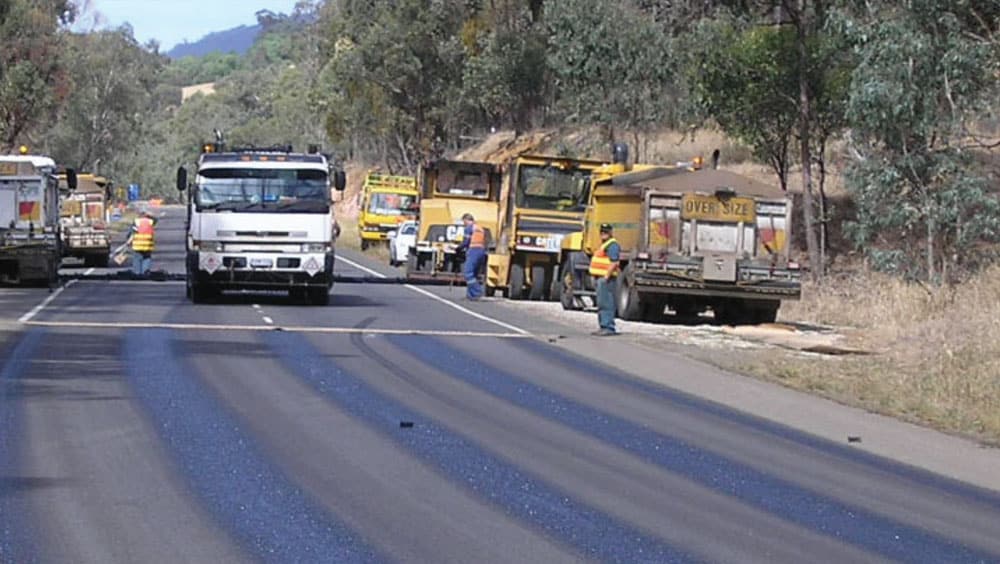
It is a current problem within Australian spray sealing practise, where a large portion of spray seals are prematurely failing as a result of inadequate application of the binder, typically leading to one of two distress mechanisms including:
Given the nature of a typical carriageway, where the vehicle wander is restricted by line marking, the difference in traffic volumes can range significantly and subsequently the required binder application rate. Given that this variation in traffic loading exists, there are often cases where the spray seal will perform well in the wheel paths, and strip in the non-trafficked areas and vice versa, where the spray seal will flush in the wheel paths and perform well in the non-trafficked areas.
To limit the effect of this differential application rates, the concept of variable rates spraying or pre-spraying has been developed to the suit the required application rates for the areas of differential traffic loading.
The concept of variable rate spraying utilises trucks with variable spray bars, allowing the binder application to vary depending on the location and position of high and low volume spray nozzles and the width of the spray bar and can be calibrated to suit the differential application rate.
Alternatively, the practise of pre-spraying comprises the initial light application to non-trafficked areas followed by a respray, so as to limit the binder being applied to the running lanes.
From a design perspective, the suitable application rates can be determined from similar principals to a uniform application using the Austroads Spray Sealing Method and making adjustments for the traffic loading and allowances.
For more information on Global Road Technology or Variable Application Rates of Spray Seals please contact GRT.
Are environmental regulations, health and safety concerns or potential profit loss a concern right now?
Contact Us Now